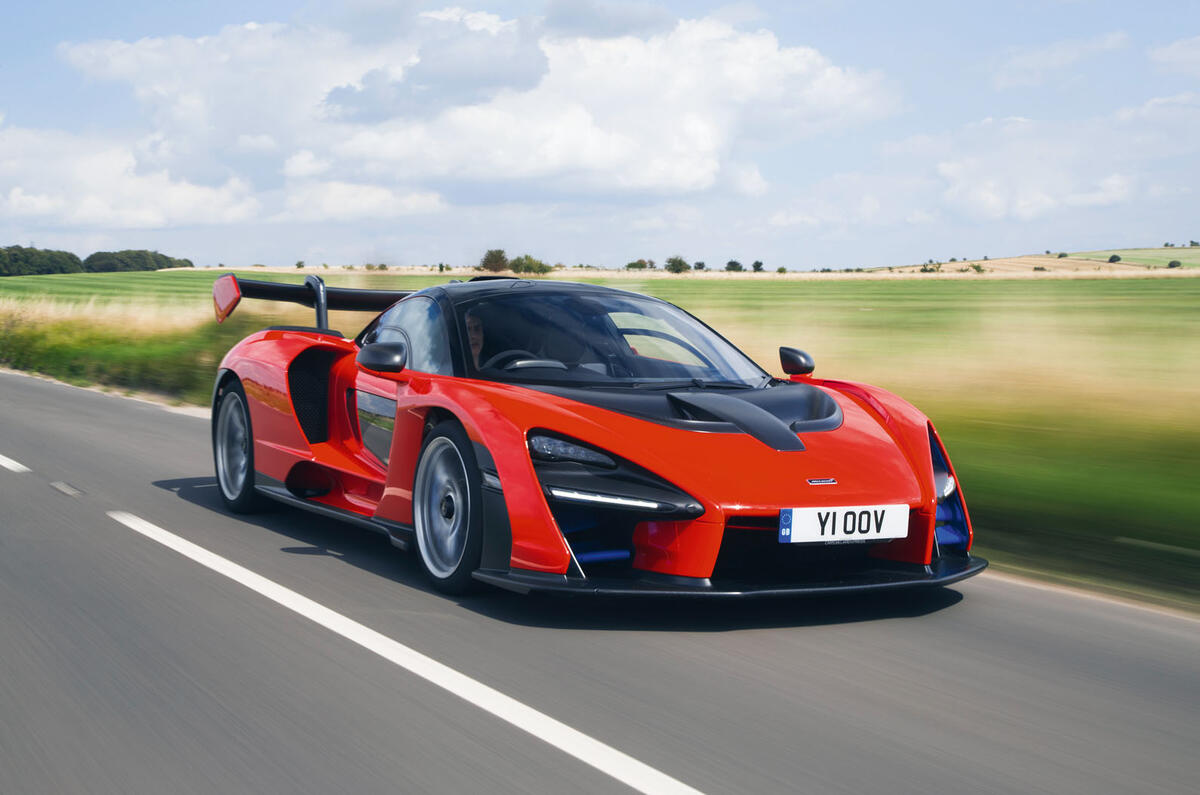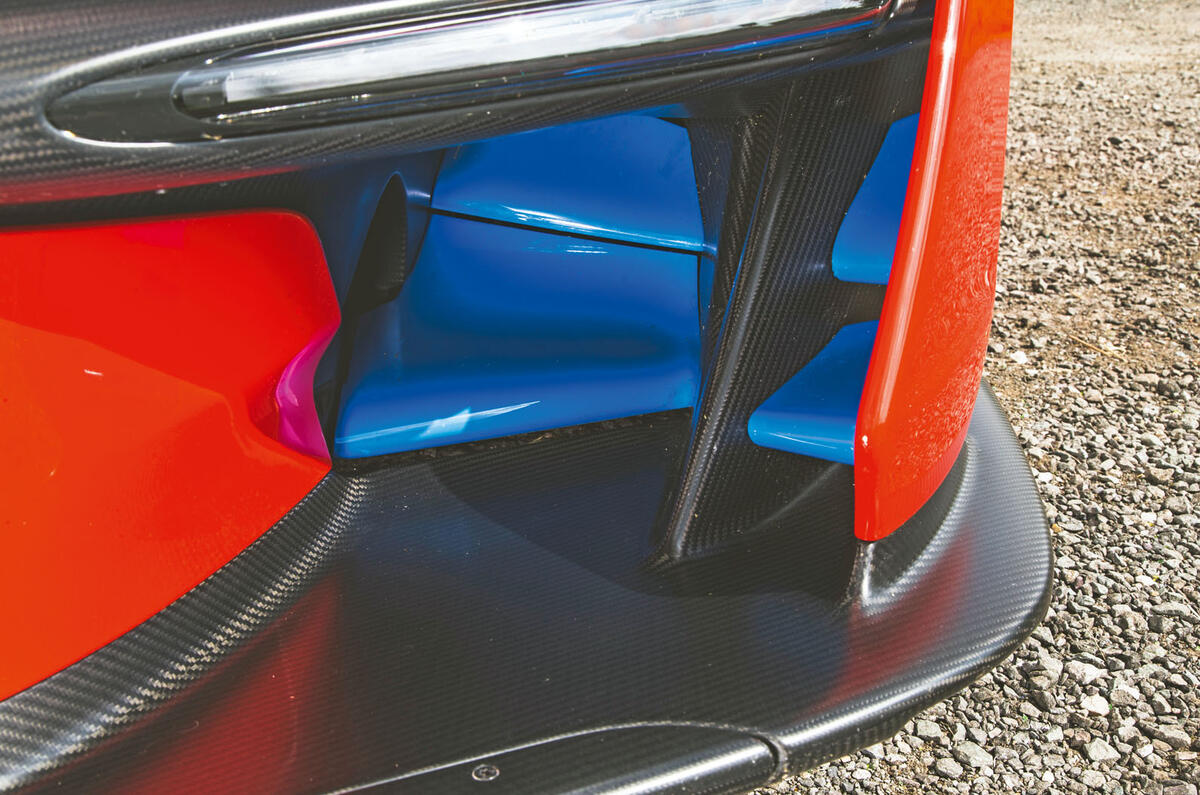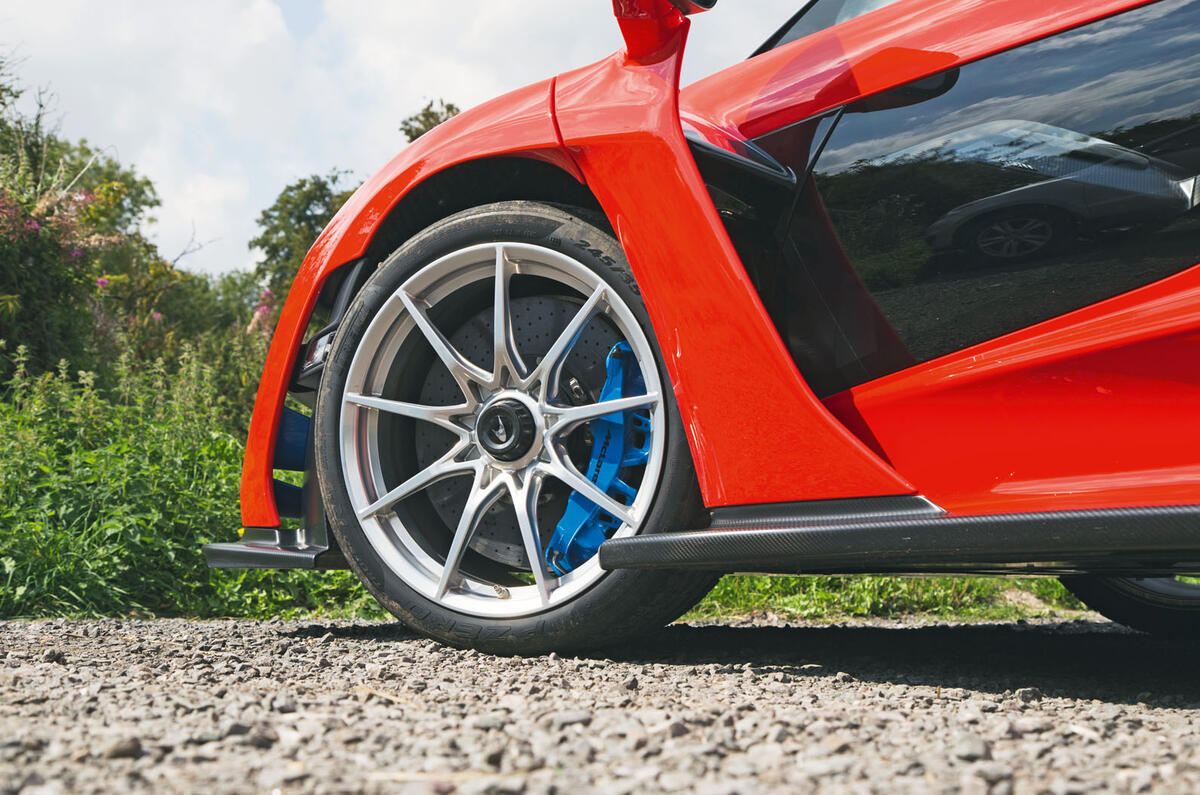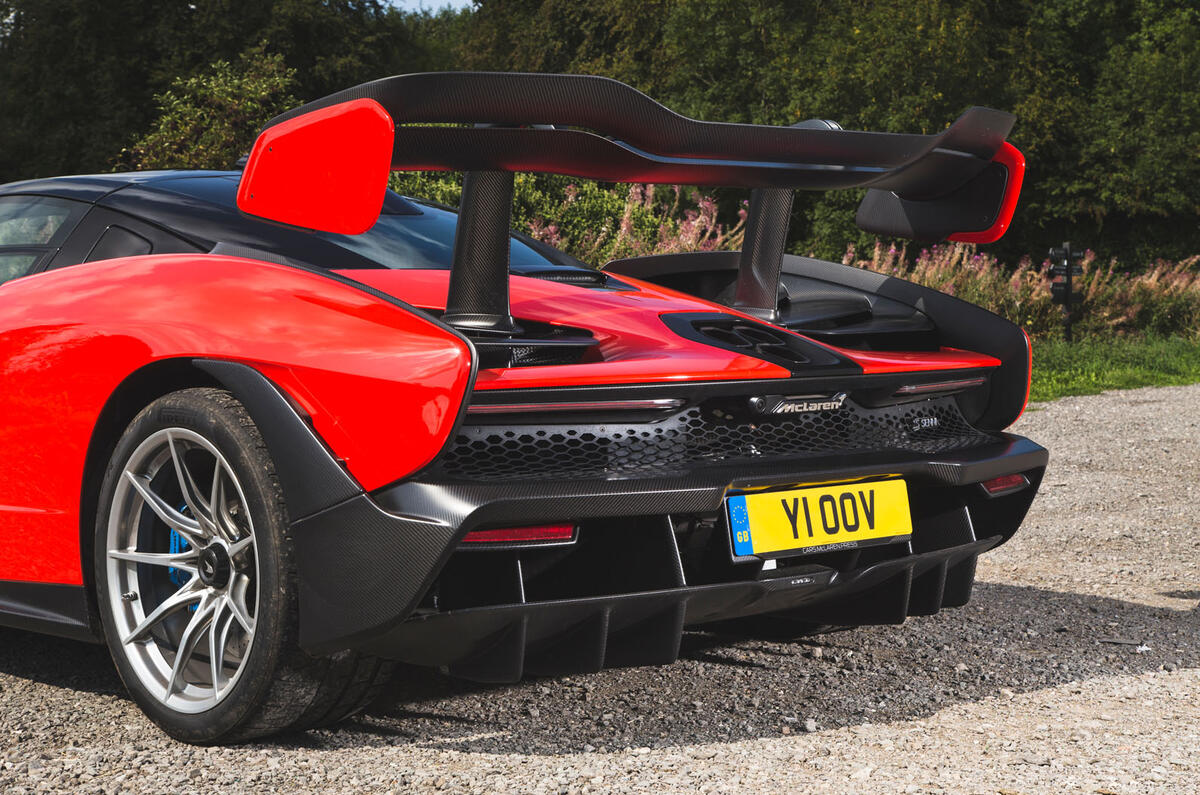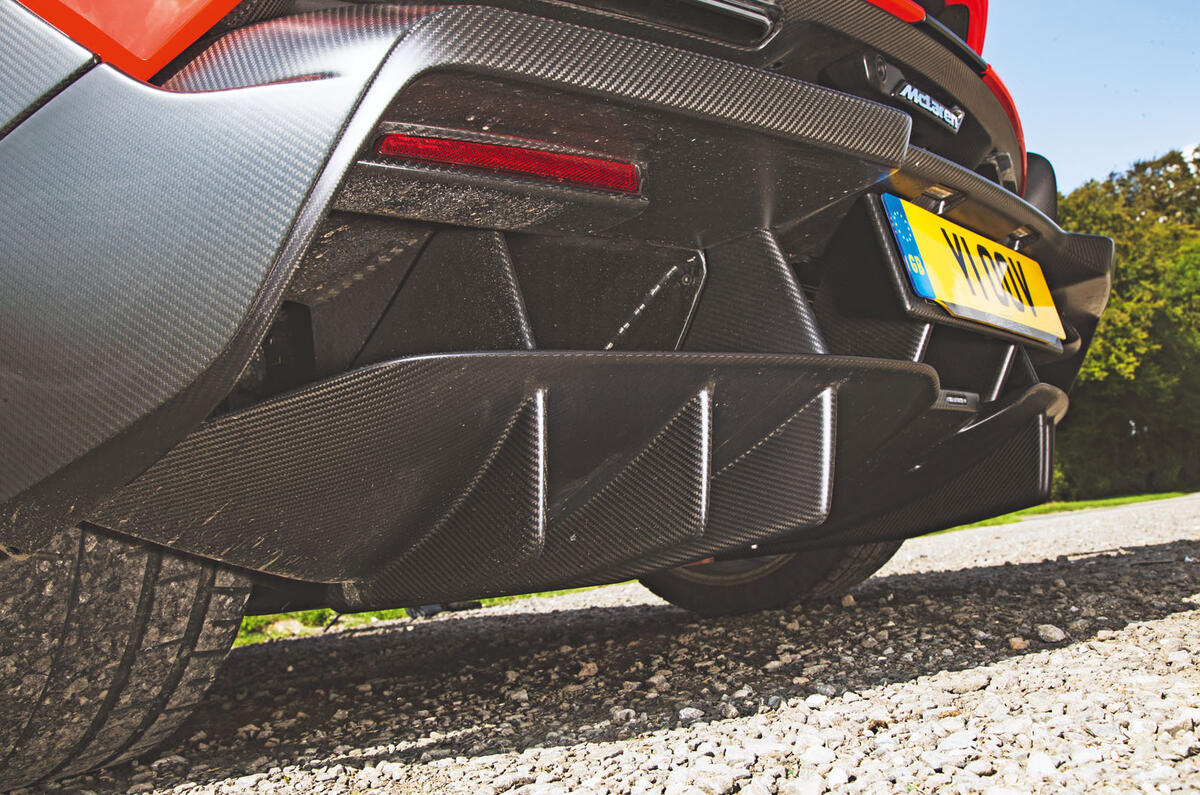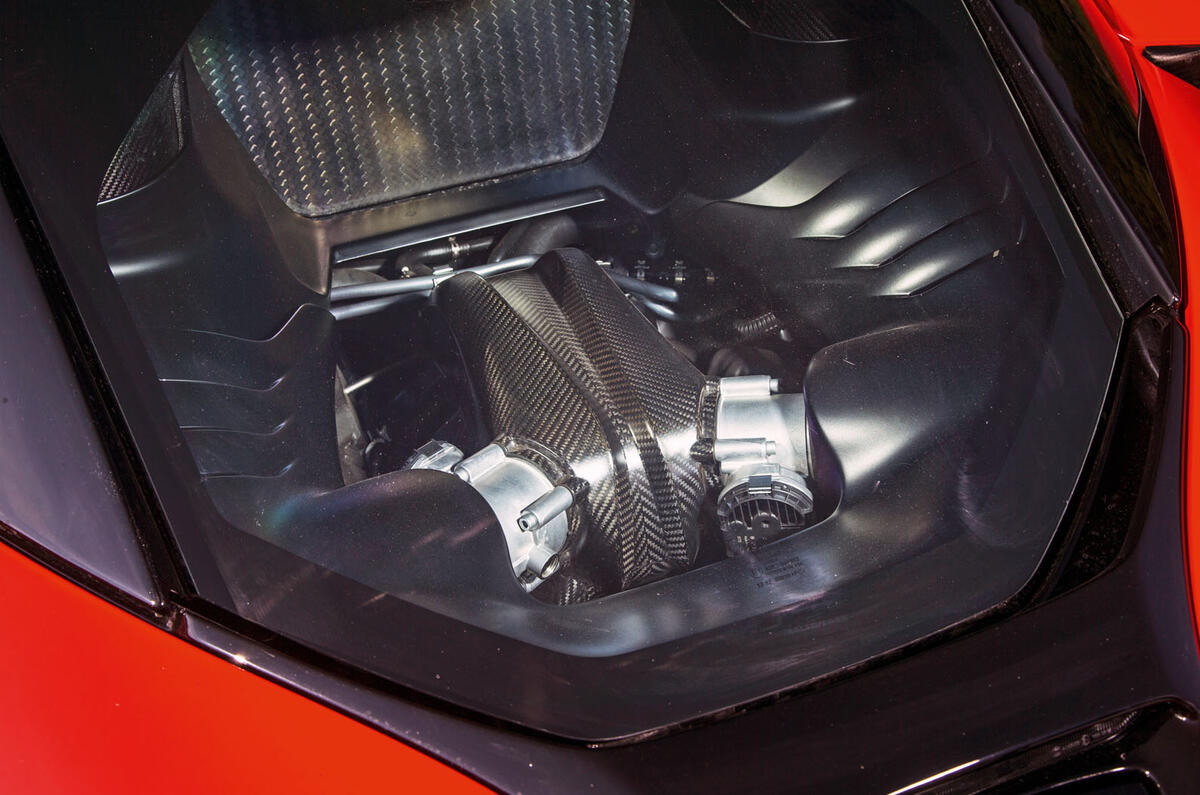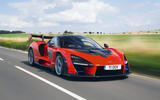One of McLaren’s trademark, up-and-outward-swinging dihedral doors grants you access to the Senna’s interior. Just like on the McLaren 720S but unlike on the 570S, it’s hinged to the body on both the roof and the lower A-pillar. And only once will you forget to close it before strapping yourself in to the car’s very aggressive-looking but surprisingly comfortable fixed-backrest bucket seats (and, in doing so, making it impossible to reach upwards and grab the handle).
The Senna’s cockpit has a very different look and feel from that of any of the firm’s other models. The fascia is in carbonfibre and is arranged around one horizontal wing-like plane. The adjustable digital instrument screen and portrait-oriented infotainment system are ostensibly what you’ll find in a 720S, although the infotainment is presented more like a free-standing edifice here, with any semblance of a ‘centre stack’ control console dispensed with entirely.
The Senna’s standard spec is intended to save weight. If you want an audio system, air conditioning or even Bluetooth connectivity for your phone, you have to add them as options. Some of those options don’t cost anything, but the Bowers & Wilkins seven-speaker audio system costs £5500; and, because our test car didn’t have it, we can’t comment on its quality.
The portrait-oriented infotainment remains a challenge at first, but you become used to negotiating its menu structures with practice. The Senna does get McLaren’s factory navigation system, although it remains a little bit unintuitive to programme and doesn’t always suggest the best route. Smartphone mirroring isn’t possible.



